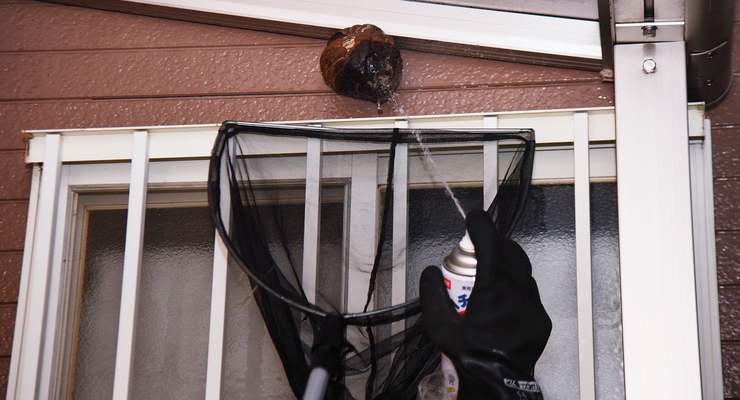
Photo courtesy of Shutterstock
Wasps, hornets and yellowjackets can be a serious nuisance and even pose health risks if not properly managed. However, with the right knowledge and steps, you can keep your outdoor living spaces pest-free.
Identify Which Pest You’re Dealing With
Wasps, hornets and yellowjackets may look similar, but they have distinct characteristics. Though they all often build nests in trees or under eaves, wasps tend to have slender bodies with narrow waists while hornets are generally more robust. Yellowjackets, which are ground nesters, are smaller, stockier and have bright yellow and black stripes.
Eliminate Nesting Sites
Regularly inspect and seal any cracks or gaps in walls, eaves and roofs, and trim bushes and trees. Keep food sources, such as garbage cans and pet food, sealed and clean up food spills immediately, as these insects are attracted to sugary and protein-rich foods. If you discover a small nest, a ready-to-use insecticidal spray specifically formulated for wasps, hornets and yellowjackets can be sprayed directly at the nest during dusk or dawn when the insects are less active.
Avoid Pests Entering Your Home
Planting mint, eucalyptus, wormwood or citronella around your home can help deter wasps, hornets and yellowjackets. Additionally, installing screens on windows and doors can prevent them from entering your home. For ongoing prevention, consider traps and baits that attract and capture pests.
Deal with Stings
Even when taking preventative measures, stings can still happen. If you get stung, remove the stinger (if it’s visible) and wash the area with soap and water. Over-the-counter pain relievers and antihistamines can alleviate pain and itching while applying an ice pack can help reduce swelling.
Find more pest prevention guidance at eLivingtoday.com.





